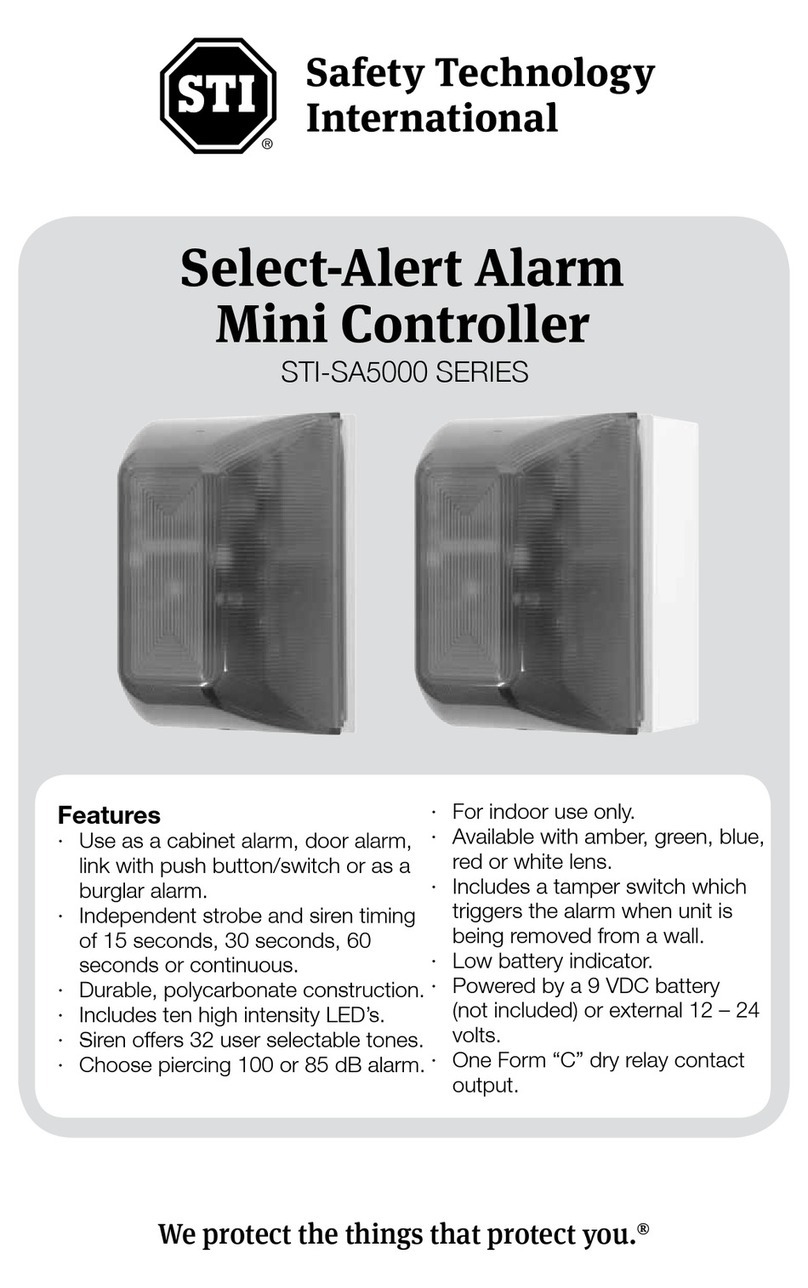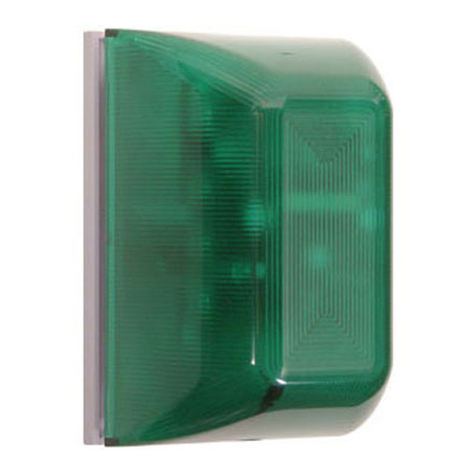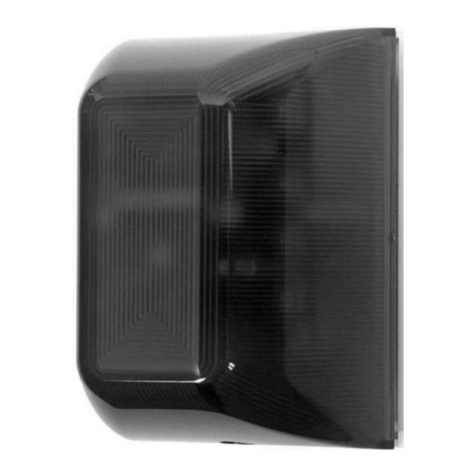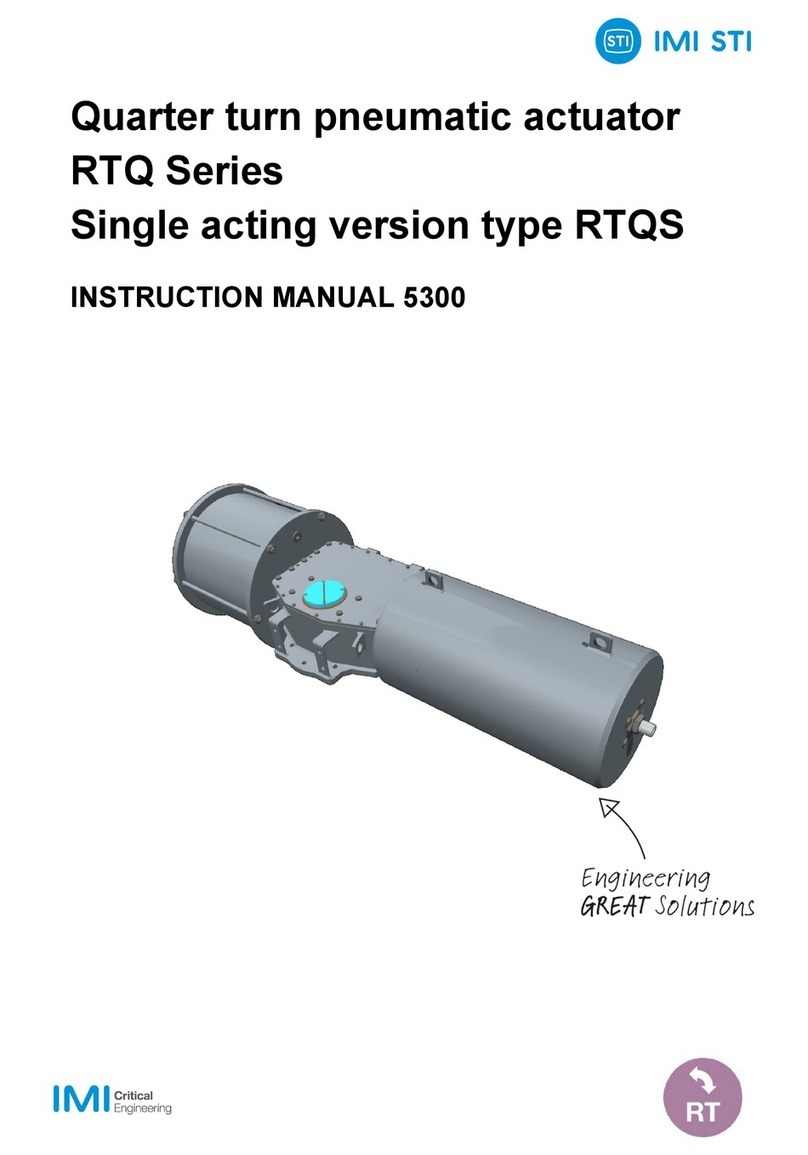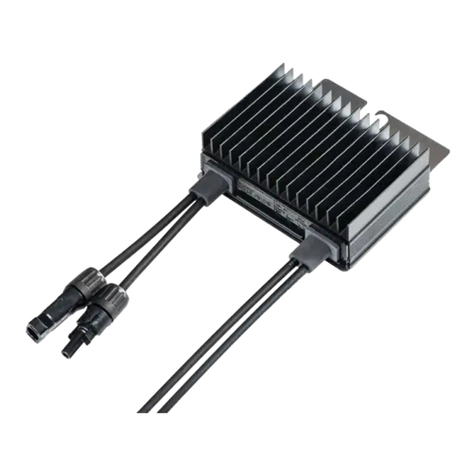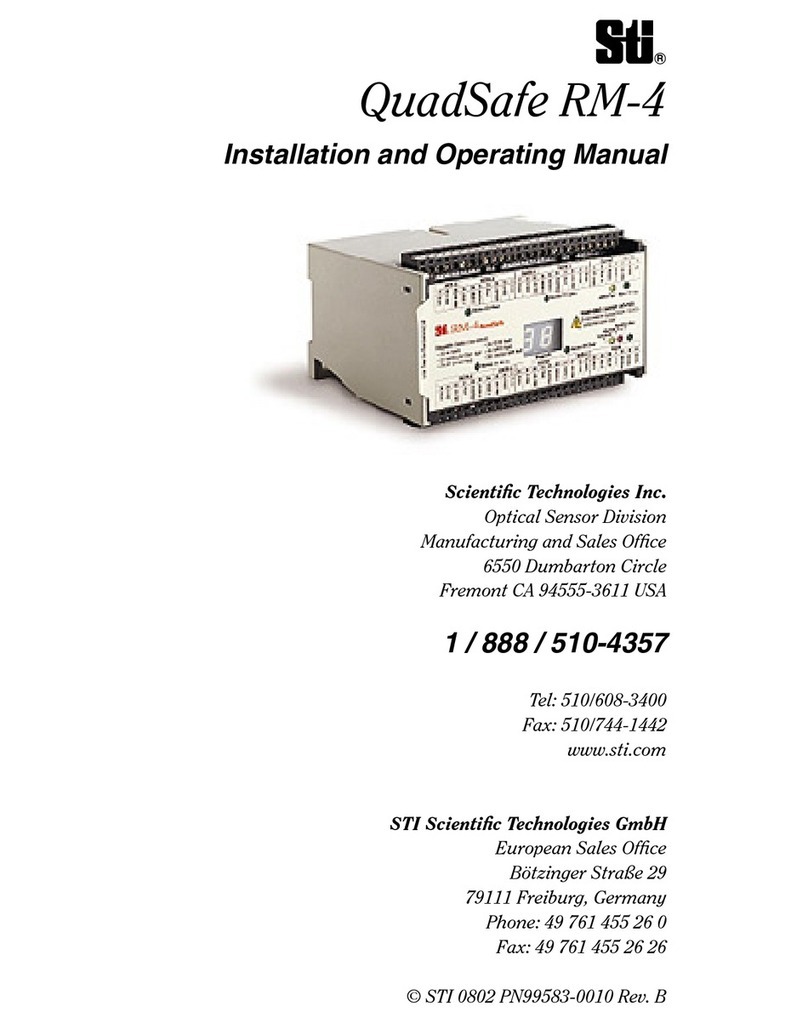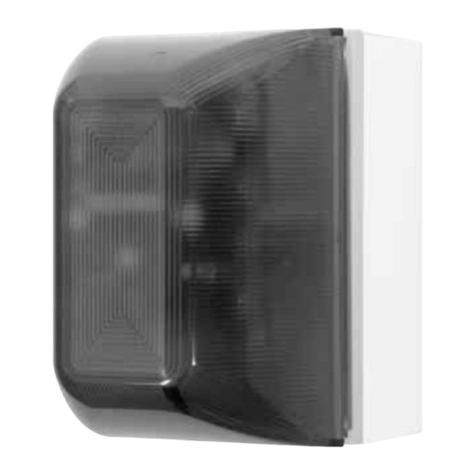
_____________________________________________________________________________________
STI S.r.l. –Via Dei Caravaggi 15, 24040 Levate (BG) –ITALY www.imi-critical.com
Manual 5014 –rev. 01 07/2013 –SC - 7 -
corrispondente:
a) SERVOMOTORE DN 63 (Fig. 7)
Togliere la guarnizione (02) e il seeger
(03), asportare la guarnizione (19),
successivamente spingere verso
l’esterno il distanziatore (07) e i pattini
di guida (04).
b) SERVOMOTORE DN 100-125-160
(Fig. 8)
Togliere la guarnizione (02), sfilare la
guarnizione (17) e i pattini di guida
(03).
c) SERVOMOTORE DN 200 (Fig. 9-10)
Svitare le quattro viti (21) e smontare la
flangia anteriore spingendola
dall’interno. Estrarre l’OR (18). Togliere
il raschiatore (02). Smontare la
guarnizione “a labbro” (17) ed i pattini
di teflon (06).
d) SERVOMOTORE DN 260-330-420
(Fig. 11)
Togliere il seeger (06), sfilare la
bussola (03) dall’esterno verso l’interno
e togliere le guarnizioni (02-04-05).
Dopo aver smontato i vari particolari
(componenti meccanici, guarnizioni),
procedere nel seguente modo:
6. pulire con liquido detergente per grasso
le parti del servomotore con ‘ausilio di
un pennello, quindi asciugare con
panno e aria compressa.
7. Ingrassare le parti grezze fondo testata
anteriore e posteriore (se ricavate da
fusione) facendo attenzione a non
ingrassare le superfici di contatto
rispettive, onde evitare fenomeni di
incollaggio (fig. 12).
8. Montare gli OR sulle testate anteriori e
posteriori ingrassandoli (fig. 14).
9. Riempire di grasso la camera anulare
del pistone (fig. 13).
ATTENZIONE: Ingrassare le guarnizioni prima di
procedere al loro montaggio.
10.Posizionare le nuove guarnizioni
secondo il paragrafo del DN
corrispondente.
11.Ingrassare la camicia del cilindro.
12.Montare il pattino in teflon sul pistone
(fig. 15).
13.Montare l’OR sul pistone facendo
attenzione ad eliminare le parti di
grasso in eccesso (fig. 15).
14.Montare il pistone nella camicia
facendo attenzione al senso di
montaggio.
15.Montare la testata anteriore e portare il
pistone fino a fondo corsa inferiore ed
eliminare il grasso in eccesso.
16.Rimontare la testata posteriore ed il
tirante con il supporto posizionatore,
a) ACTUATOR ND 63 (Fig. 7)
Remove gasket (02) and stop ring (03),
take gasket (19), away, then push
spacer (07) and sliding rings (04)
towards the outside.
b) ACTUATOR ND 100-125-160 (Fig. 8)
Remove gasket (02), pull gasket (17)
and sliding rings out (03).
c) ACTUATOR ND 200 (Fig. 9-10)
Unloose screws (21) and remove front
flange pushing it from the inside. Take
o-ring (18) away. Remove dust ring
(02), lip seal (17) And PTFE sliding
rings (06).
d) ACTUATOR ND 260-330-420 (Fig. 11)
Remove stop ring (06), push bushing
(03) towards the inside and take
gaskets (02-04-05) away.
After disassembling of the various parts
(mechanical components, gaskets
etc.), proceed as follows:
6. clean actuator parts with detergent
suitable for grease using a brush, then
dry with a cloth and compressed air.
7. Grease rough parts of front and back
covers (if obtained from casting). Take
care not to grease other surfaces
avoiding any possible glued (fig. 12).
8. Grease o-ring and mount them on front
and back covers (fig. 14).
9. Fill the piston chamber with grease
(fig. 13).
WARNING: Grease gaskets before mounting
them.
10. Place the new gaskets as indicated on
the paragraph corresponding to the
size of the used actuator.
11. Grease the cylinder.
12. Mount the PTFE sliding ring on the
piston (fig. 15).
13. Mount OR on piston making attention
to eliminate grease in surplus (fig. 15).
14. Assemble the piston and the cylinder.
Take care to the mounting direction.
15. Mount the front cover and drive the
piston to lower end of stroke. Clean the
exceeding grease.
16. Mount the back cover, the positioner
support tie rod and then the other tie
rods.
17. Screw tie rods nuts (fig. 02)according
